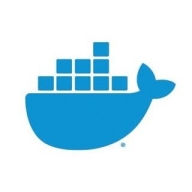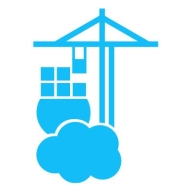

Docker and Portainer compete in the container management space. Portainer seems to have the upper hand due to its user-friendly management features.
Features: Docker is known for creating, deploying, and running applications through containers, supported by a large community and wide-ranging integrations. Portainer offers a streamlined management interface, simplifying container administration and handling complex environments efficiently.
Ease of Deployment and Customer Service: Docker's deployment process requires familiarity with command-line interfaces, which may be daunting for beginners. Portainer provides an easier setup and configuration. Regarding customer service, Portainer often provides more direct support, whereas Docker leans on its large community for assistance.
Pricing and ROI: Docker offers various pricing tiers including a free tier, presenting flexibility but potentially leading to variable costs. Portainer generally has a more predictable pricing structure, offering value for its management capabilities. It typically delivers favorable ROI through reduced management overhead and operational efficiencies.
| Product | Market Share (%) |
|---|---|
| Docker | 4.7% |
| Portainer | 5.0% |
| Other | 90.3% |
| Company Size | Count |
|---|---|
| Small Business | 22 |
| Midsize Enterprise | 4 |
| Large Enterprise | 34 |
Docker provides a robust containerization platform, enabling identical environments across machines. With features like portability, fast deployment, and minimal resource consumption, Docker supports development, facilitating multitier architectures and integrating seamlessly with Kubernetes.
Docker offers an advanced containerization solution that enhances application management through automation and security measures. By isolating environments and managing dependencies, Docker supports platforms for scalable application development. Its integration with orchestration tools like Kubernetes and independence from host operating systems enable developers to create lightweight applications effectively. Although known for its cost efficiency and flexibility, Docker could improve in areas such as stability, command-line usability, and Windows performance integration. Users also point out the need for enhanced documentation, simplified management tools, and better persistence storage options, along with stronger marketing and easier user adoption.
What important features does Docker provide?Industries leverage Docker for application packaging, deploying microservices, and CI/CD processes. It supports DevOps, enhances backend service management, and enables resource-efficient development environments. Docker's compatibility with tools such as Jenkins ensures seamless integration and orchestration in modern IT workflows.
Portainer offers a robust platform for managing Docker environments, streamlining containerized application deployments and simplifying complex processes. It provides scalability and efficiency for IT operations.
Portainer facilitates comprehensive management of containerized environments, increasing operational efficiency. Known for its intuitive interface and broad functionality, Portainer minimizes time spent on mundane management tasks. Users benefit from resource optimization and improved visibility in container orchestration. As organizations continue to embrace cloud-native technologies, Portainer becomes a reliable choice for those looking to harness the full potential of Docker while maintaining easy control and oversight of container workloads.
What key features does Portainer offer?In industries like healthcare and finance, Portainer is deployed to manage sensitive data workflows, ensuring compliance and security. It's used in manufacturing for optimizing IoT integrations and in the tech industry to manage microservices efficiently, aligning with modern agile development practices.
We monitor all Container Management reviews to prevent fraudulent reviews and keep review quality high. We do not post reviews by company employees or direct competitors. We validate each review for authenticity via cross-reference with LinkedIn, and personal follow-up with the reviewer when necessary.